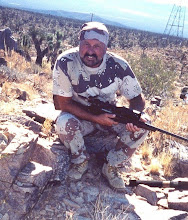What is the ideal bullet weight to use with your rifle barrel’s rate of twist? If you know the rate of twist of your rifle barrel, something called the “Greenhill Formula” could be a big help when it comes to finding that magic pill.
For the majority of standard rifle cartridges, the Greenhill Formula is expressed this way:
T=150(d/r) (Note: For velocities in excess of 2,800 fps, substitute 180 for 150)
“T” is the twist rate
“d” is the bullet diameter
“r” is the bullet’s length to diameter ratio (bullet length divided by its diameter)
Let’s illustrate this formula by using a very common caliber and bullet. Suppose you owned a .308 caliber rifle and you were going to be using 168-grain Sierra Match King bullets. Using the formula above, you would arrive at a calculated twist rate of 1:11:.76. Since that’s pretty darn close to 1:12, let’s just call it that. The whole thing seems to make good sense because the typical twist rate for most of the classic .308 rifles is 1:12.
Let’s look at another example. Suppose you were using that same .308 rifle and you wanted to shoot a heavier bullet. This time we plug in the data for a Sierra 175-grain Match King and the Greenhill Formula equation looks like this: T=150 X .308/4.081 and that equation computes our optimum twist rate to be 1:11:.32. So, we have a difference of 0.44 of an inch. That may not seem like a whole lot but in this application, it is.
Check a lot of the custom .308 rifles on the market and you’ll notice that their twist rates are faster (1:10 to 1:11.25 range) than the typical classic .308s of old. The faster twist will enable the new custom .308 to shoot heavier 175-grain bullets well while the classic 1:12 twist rifles will max out accuracy wise around the 168-grain mark.
That’s not to say that the newer rifles with a faster twist won’t shoot the lighter weight bullets because they can, and very well. The lighter bullets don’t seem to mind being rotated faster so the faster twist is a benefit over the slower twist barrel. Therefore, you’ll get the best of both worlds with a slightly faster twist rate.
Having a Chronograph to check the speed of your hand loads can really help your load building efforts too. If you are on the cusp regarding your bullet weight and twist rate (bullet a tad too heavy for your twist) you may be able to pinch additional accuracy by going for the hottest “safe-load” you can build.
Can a bullet be over stabilized? Can it be spun too darn fast? Yes it can. If the exiting bullet is spun too fast, the bullet has a tendency to travel along its downward arc while its bullet tip points skyward. This attitude steals velocity and hence increases the bullet’s susceptibility to wind drift. If all factors are as they should be, the properly stabilized bullet tip should tip downward as the bullet begins its downward arc.
If you over stabilize a bullet, chances are you will never notice it. Unless, of course, the over stabilization is extreme and you are rotating the jacket right off the bullet. Typically though accuracy deterioration from an “over-stabilized” bullet will only be noticeable at very long ranges. For your average 100 to 250-yard hunting range, it’s not really much of an issue.
Using this formula will most certainly help when planning the purchase of your next rifle. The preparation and homework will make it more likely that, in the end, you’ll be happy with the rifle, caliber and bullet weight that will best suit the intended purpose of the new rifle. Another important accuracy factor is your glass. For the best performance, choose a quality HAWKE rifle scope from RedHunterLLC.
Tuesday, September 8, 2009
Subscribe to:
Post Comments (Atom)



No comments:
Post a Comment